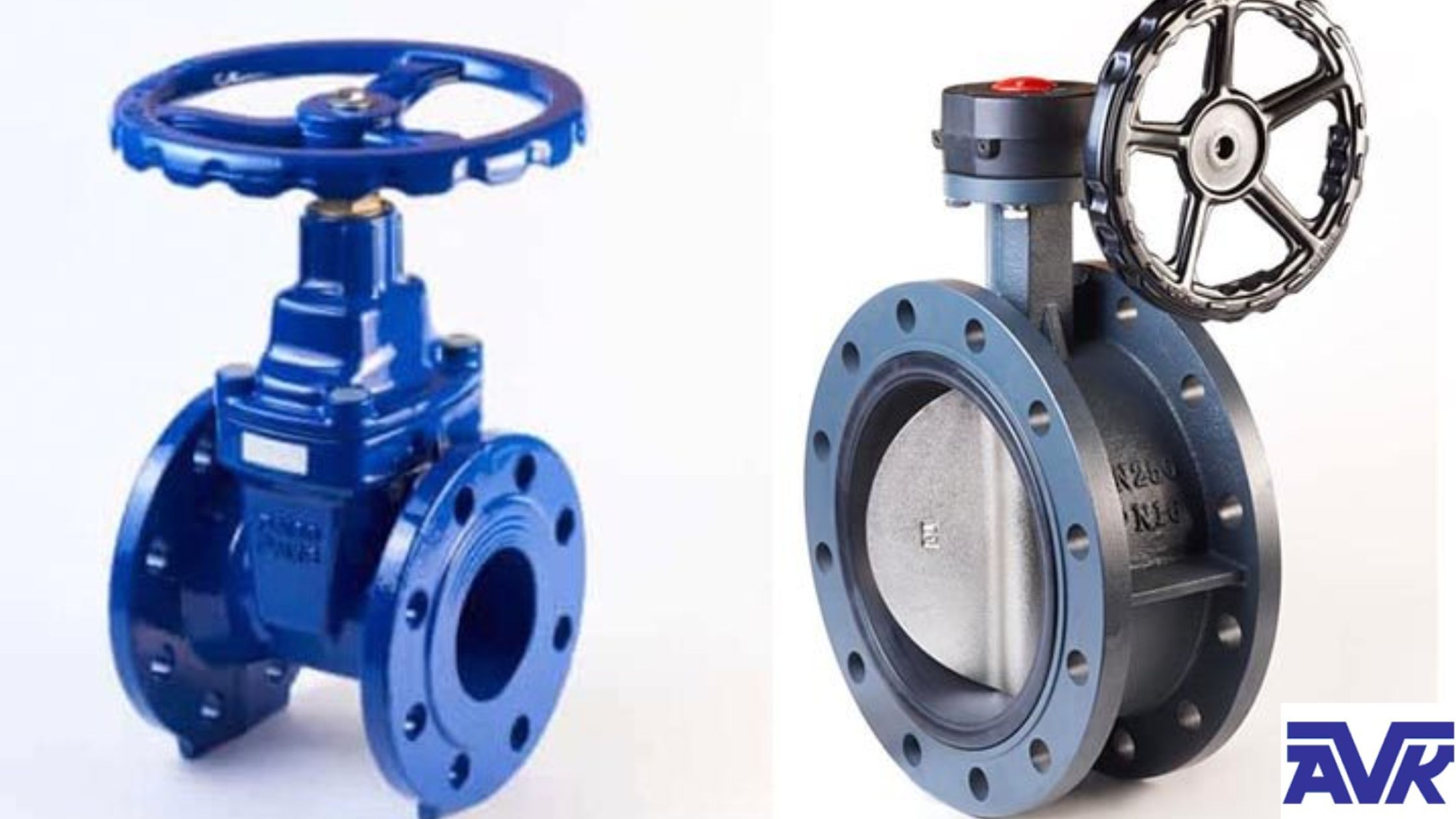The choice between a gate valve and a butterfly valve for an application is not straightforward at first look. To prevent unneeded operations setbacks, it is crucial to grasp the distinctions between these two valve kinds. In addition to discussing the applicability, benefits, and drawbacks of each valve type for various applications, this article outlines the key similarities and differences between gate valves and butterfly valves.
Both gate and butterfly valves are used to start and stop the flow, but butterfly valves also can control the flow by partially closing the disc. Gate valves are multi-turn valves, while butterfly valves are quarter-turn valves and may be turned off much more quickly. Butterfly valves are preferred for bigger port sizes, whereas gate valves are preferred for high-pressure systems.
How Do Gate Valves Function?
The disc of a gate valve gets its name because it functions like a gate by either permitting or preventing media flow. It is one of the most often used valves because it operates more simply than other control valves. A gate valve has extremely minimal resistance to liquid or gas media flowing straight through it because it is a full-port valve, meaning that the ports are the same size as the inner diameter of the connected pipes. As a result, there is not much pressure loss via the valve.
How to Open a Gate Valve:
Gate valves require more than one complete rotation of the handwheel to fully open or close them. The gate is raised or lowered by the stem when the handwheel is turned in either direction. The media can move through the tunnel when the gate is fully open. Media cannot flow when the gate is open because it is obstructed. Because there is a nonlinear relationship between the gate’s motion and flow rate, gate valves cannot control or throttle flow.
The flow will crash against the partially open gate as it passes through the valve, increasing the flow’s velocity and turbulence, which both contribute to greater wear on the disc and seats.
A gate valve can be opened or closed manually, pneumatically, or electronically. The handwheel must be spun by an on-site user to open or close the valve using the manual approach. Due to the seldom opening and closing of gate valves, this approach is the most economical. The remote control operation of a gate valve is possible with the pneumatic and electric methods. Both electrical and pneumatic actuation requires on-site electrical power and a pneumatic infrastructure.
The Way a Butterfly Valve Functions:
By twisting the handle of a butterfly valve 90 degrees or by employing an electric or pneumatic actuator, the butterfly valve’s basic function is accomplished. This causes the disc to revolve by turning the valve’s stem. The disc is parallel to the flow when it is fully open and perpendicular to the flow when it is fully closed.
The disc can be partially opened or closed to provide proportionate or throttled flow rates. A butterfly valve can be gear controlled via a gearbox if it is a big butterfly valve or if it is used in a liquid environment where rapid closing could cause water hammer.
However, the comparatively quick closing speed of the butterfly valve is eliminated since the handwheel of the gearbox must be rotated past 90 degrees.
When addressing different varieties of butterfly valves, stem offset and body are the two main subjects. Body and stem offset describe how the valve’s body is connected to the piping and whether the stem is in the center of the disc or offset, respectively.
The stem might be displaced beyond the midline or can cross the disc’s centerline (concentric) (eccentric). Offset is utilized to lessen how much the disc grinds on the seats while shutting. The offset can be single, double, or triple. The disc goes closer to being fully closed before coming into contact with the seal the greater the offset. The valve’s service life may be shortened by any rubbing against the seal.
Based on the requirements of the application, the materials for the valve’s body and seat should be carefully selected. Iron, stainless steel, carbon steel, nickel alloy, titanium alloy, and nickel aluminum bronze are typical body materials. The weight, corrosion resistance, and temperature sensitivity of these materials vary.
Read More: 7 Steps To Choosing The Perfect PSLE Science Tutor



